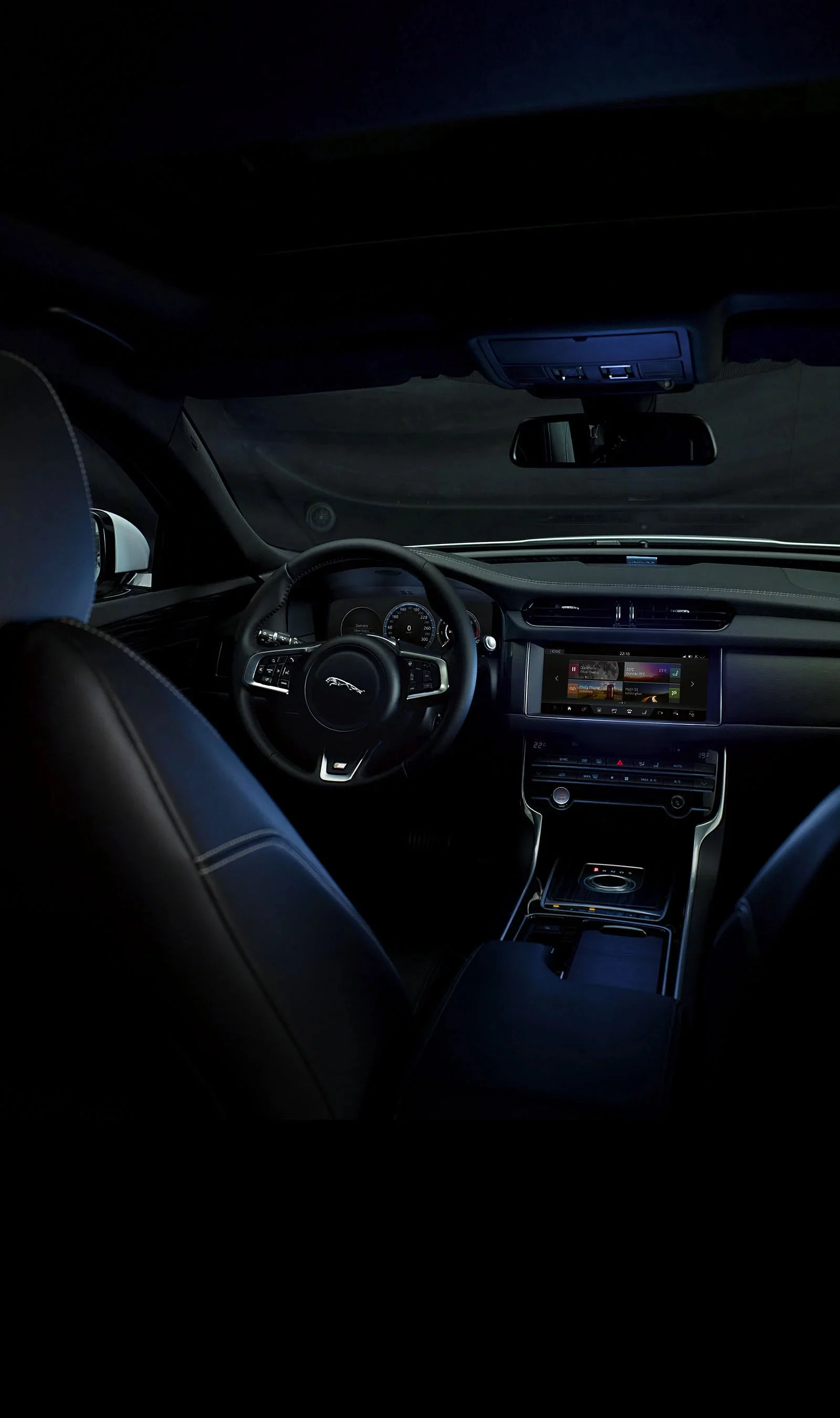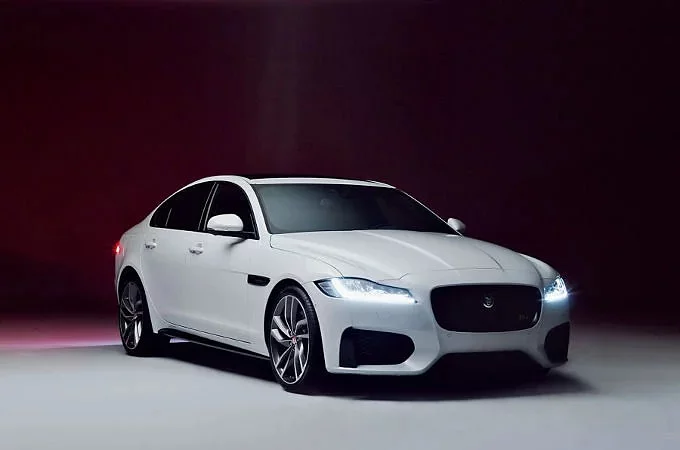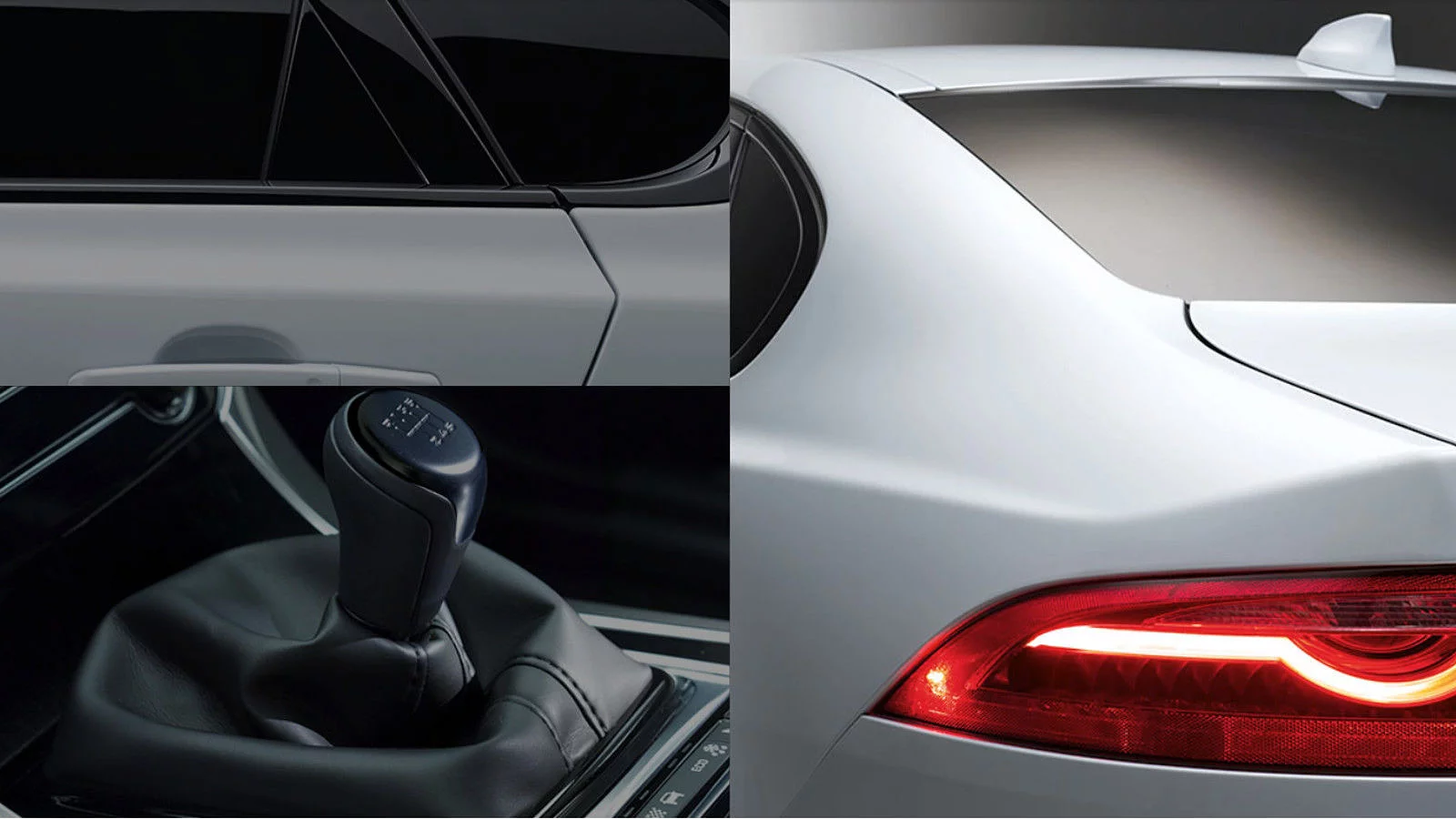ЭВОЛЮЦИЯ XF

As you walk up to your Jaguar XF from the rear, your hand rising and reaching for the driver’s door handle, you might recognise in the radius at the end of the bonnet the ghost of the very first sports saloon, Jaguar’s Mk II from the 1960s. For anyone who knows that icon, seeing this familiar curve in a car as modern as XF is uncanny. This is an utterly modern design, a car whose physical form, like the performance and technology it packages, looks to the future.
>Но талант Яна Каллума, директора по дизайну компании Jaguar, и членов его команды настолько огромен, что они смогли напомнить нам о прошлом XF, не принося в жертву современный стиль. Они решили повеселиться. И создали автомобиль, который, как и любая гениальная дизайнерская задумка, потрясающе выглядит и не перестает удивлять. Чем дольше вы владеете автомобилем, тем больше подобных деталей он вам открывает.
Jaguar XF уже занял свое место среди легендарных моделей Jaguar. «Поэтому мы сознательно решили его изменить», — признается г-н Каллум. «Первый XF трансформировал бренд, мы начали говорить на современном языке дизайна», — говорит Адам Хаттон, которому Каллум поручил модернизацию экстерьера XF. Хаттон работал и над первой моделью. «Я считаю, отличительная черта хорошего дизайна автомобиля в том, что даже после внесения изменений он все еще отлично смотрится на дороге и хорошо продается. Так что время радикальных перемен для XF еще не настало. Мы, наоборот, хотели подчеркнуть его преимущества».
Разумеется, со дня выпуска первого XF в 2007 году многое изменилось. Был создан более компактный и спортивный XE, что позволило XF обрести более высокий статус. А значительные инвестиции компании Jaguar в технологии способствовали разработке легкой алюминиевой архитектуры, инновационного четырехцилиндрового силового агрегата Ingenium собственного производства, а также ряда ориентированных на водителя технологий: от лучшей в своем классе информационно-развлекательной системы InControl Touch Pro, обеспечивающей качественную связь, до системы адаптации к дорожному покрытию (ASPC), которая помогает уверенно начать движение даже на скользкой поверхности (XF стал первой моделью в данном сегменте, оснащенной такими опциями).
Вы можете видеть, как изменились формы и пропорции XF и какие технические преимущества обеспечивают эти перемены. Легкая алюминиевая конструкция, лежащая в основе автомобиля, — это действительно «архитектура», а не фиксированная «платформа», поддерживающая кузов. Поэтому команда дизайнеров могла начать с ключевых аспектов, установив колеса именно там, где им хотелось, чтобы придать автомобилю идеальные пропорции и подчеркнуть его стать.
Несмотря на то, что XF этого модельного года укорочен по сравнению со своим предшественником с целью повышения маневренности, он кажется больше и серьезнее благодаря удлиненной колесной базе и смещенным к углам колесам. Укороченная передняя часть кузова сбалансирована сдержанной решеткой радиатора, что позволяет подчеркнуть динамичность модели, а вытянутая секция между линией передней оси и рулевым колесом придает еще больше роскоши, подчеркивая пропорции, которые вы хотите видеть у люксового автомобиля с мощным двигателем и задним приводом (вы также можете заказать комплектацию XF с четырехцилиндровым двигателем и полным приводом).
«Мы слегка изменили позиционирование XF, так как у нас есть XE, — отмечает Хаттон. — Уходящему поколению XF приходилось нести тяжелую ношу. Это были базовые автомобили, автомобили бизнес-класса и четырехдверные купе. Создание XE действительно позволило преобразить XF, сделать таким, каким вы видите его сейчас».

Of course, more length between the axles creates more space in the cabin, and XF will have the best rear legroom in its class. So the design team chose to communicate this with a ‘sixth light’, an additional window set into the C-pillar behind the rear doors. This, and the slightly more pronounced, formal ‘deck’ over the boot are probably the most striking changes to XF.
But it’s only when you speak to the designers that the subtleties of their work become apparent: the way they capture, control and direct light to bring a shape to life, and make us fall in love with a design without entirely knowing why. Look for the gentle ‘fluting’ that runs back into XF’s bonnet from the headlamps – a hallmark of Jaguar saloons of the past – but also a way to capture arrowheads of light on the bonnet to catch your eye. Or best of all perhaps the ‘spear of light’: the line that flows back from around the front wheel arches and along the body side, emphasising the more level waistline of this more formal saloon.
‘The Mark II had this lovely line coming over the front wheel, and going all the way to the rear,’ says Hatton. ‘We’re just reinterpreting that in a very modern way. Ian christened it the spear of light. You can see how that curve is absolutely perfect. It tapers off really nicely to the rear. It gives that very elegant Britishness to the car. It also slims the car down even further. XF is lightweight, and our job is to show that in the design of the exterior.’
Callum and his team have married perfect stance and proportion with clever, subtle detailing. XF again displays Callum’s insistence on a design with a voluptuous view from directly above, which in turn causes your perception of the car’s form to shift as you move around it at street level. But design doesn’t exist in a vacuum. Just as XF’s design has been helped by its aluminium intensive architecture, so the design team helped Jaguar’s engineers and aerodynamicists to create – jointly with XE – the most aerodynamic Jaguar ever with a drag coefficient of just 0.26.
Combine that slippery shape with the highly-efficient Ingenium four-cylinder diesel engine, a weight saving of around 190kg, and further fuel-saving advances like the electric power steering, and you will be able to specify an XF that will emit as little as 104g of CO2 for every kilometre travelled*.
‘That’s a big story with XF,’ says Callum. ‘We worked with the aero guys right from the first sketch. If you do it holistically, and just try to make the whole car as aerodynamic as possible, you end up with something amorphous. Instead, we work the details, managing the airflow through the car and around the car, like a racecar engineer would. That way you get a much better result, both for design and efficiency.’
They both know they’ve got that perfect result: a car that unites Jaguar’s now-expected design leadership with state-of-the-art technology and an extraordinary breadth of performance. Hatton says, ‘You know, it’s not so easy to create a car that doesn’t have an unflattering angle. But I’m convinced that you couldn’t take a bad photograph of XF.’
*The fuel consumption figures provided are as a result of official manufacturer's tests in accordance with EU legislation.
A vehicle’s actual fuel consumption may differ from that achieved in such tests and these figures are for comparative purposes only.
Official fuel consumption figures for the XF in l/100km (mpg): Urban 11.9 (23.7) – 4.8 (58.9) , Extra urban 6.7 (42.2) – 3.6 (78.5) , Combined 8.6 (32.9) – 4.0 (70.6) . CO2 emissions g/km: 204 – 104.
